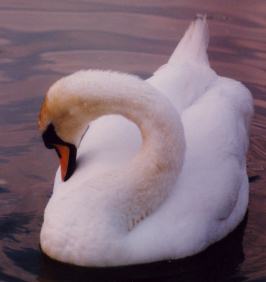QR-DOSY
At the beginning of the month we saw that there are cases where the diffusion coefficients can be measured with the same mathematical tools used to measure relaxation. We have seen DOSY spectra of pure compounds where each signal decays as a pure exponential. Even a mixture can behave in the same way, if the signals don't overlap. In summary, calculating the diffusion coefficients is often easy.
What I was curious to discover was: is it possible to recalculate the components of a mixture if the diffusion coeffients are known? From a pure mathematical point of view the answer was already: "yes", but I wanted to verify it in practice.
As far as I know, something like: "QR-DOSY" has never been mentioned. So many DOSY methods already exist and I don't mind to increase the Babel with yet another acronym. Do you?
THEORY
If we know the diffusion coefficient D(j) we can calculate that the NMR signal in the spectrum i will be proportional to a value A(i,j) = exp(-D(j)F(i)) where F is a function of the gyromagnetic ratio, the gradient strength, the diffusion delay, etc.. but not a function of the chemical shift nor of the diffusion coefficient.
For each column of the DOSY spectrum we have a system of equations: Ax = b.
x = intensity of the spectrum of the pure compounds at the chemical shift that coresponds to the given column.
b = intensity of the DOSY along the same column.
We know A and b, therefore we can calculate x. A is the same for all the columns and this is a great advantage. We can apply a well known decomposition: Rx = Qb.
Calculating Q and R from A takes time, but we need to do it only once. Then then computer can swiftly solve all the systems in the form Rx = Qb.
METHODS
Obviously, we will find that some values of the x will be negative. In such a case, we can choose a subset of A (omitting the component with negative intensity) and solve the reduced problem. This simplifying mechanism can be applied iteratively, even when the value of x is positive yet small.
RESULTS

This is the same old spectrum we are familiar with, processed with the new QR-DOSY.
DISCUSSION
Two components are completely separated. The third component is not, although at this point it becomes easy to recognize its peaks. Other cases I have studied yield similar results, maybe not as nice. Advantages of the QR-DOSY method:
- easy to understand;
- easy to use WITH THE ASSISTANCE of a software for the book-keeping activity (like measuring the diffusion coefficients);
- fast;
- the user can play with a few parameters, trying to improve the results;
- the final spectra are clean from artifacts.
Cons:
- not all the components are always resolved;
- it's a problem if two diffusion coefficients are similar (of course the program itself can easily detect this circumstance).








